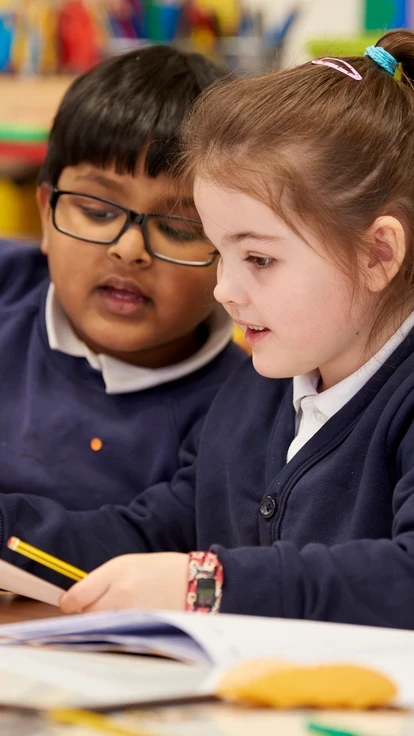
A fighting chance for every child
A manifesto to end educational inequality
Today, over 4 million children in the UK live in poverty. These children are significantly more likely to end up not in any form of education, employment, or training when they leave school, because while talent is spread equally across the country – opportunity is not.
Our new government has an opportunity to break the cycle of disadvantage and build a country in which every child leaves school with the skills and knowledge that they need to succeed in the world. To do this, tackling inequality in education must be at the heart of our new Prime Minister’s agenda. This is not just a matter of fairness - our country’s long-term prosperity depends on it.
Last August, we published 'A fighting chance for every child: a manifesto to end educational inequality', which included eleven proposals to make our education system fairer.
Since then, we have seen progress, but there is still lots more to be done. We need to see more action to weight resources and funding towards those pupils and schools serving disadvantaged communities – where the challenges are harder. We know that change does not happen overnight, and so we have been working hard to keep our proposals at the top of decision makers agenda.
We all have a role to play. We strongly encourage the government, business, schools and charities to adopt and promote these recommendations to give every child a fighting chance for a bright future - and in turn build a fairer thriving society.
Funding
We need an education system that is fairly and fully funded
We’ve been pleased to see the government commit to investing additional funding for schools by 2024-25, a slight increase to pupil premium and additional funding for pupils with SEND. However, this currently still falls short of what is needed - particularly for schools serving the most disadvantaged communities. We’re continuing to call for more and for it to be weighted to where it can make the greatest difference via the pupil premium.
1. Increase funding for schools serving disadvantaged communities
Aims:
- Restore pupil premium rates to 2015/16 real-terms levels to counteract inflation
- Increase the early years pupil premium to the same rate as at primary school
- Increase pupil premium rates by 50% for pupils in long-term poverty
- Introduce a new pupil premium for 16 to 19-year-olds
A teacher’s job is to teach. But to teach successfully, the conditions need to be right, and schools need to be well resourced.
Whilst we welcome the uplifts that were announced in the 2021 Autumn Budget and Spending Review, we maintain that additional education spending weighted towards schools serving disadvantaged communities is still urgently needed. The pupils in these schools were severely impacted by the pandemic and suffered the greatest loss of learning. We think that the best way to channel this funding is via the pupil premium. Our report Rethinking pupil premium: A costed proposal for levelling up provides more detail.
2. Incentivise teachers to work where they're needed
Aims:
- Ensure teacher salaries are competitive.
- Incentivise teachers to work in schools serving disadvantaged communities and teach shortage subjects through pay premiums.
- Cut workload so teachers can focus on teaching.
Teacher recruitment and retention is increasingly challenging, particularly for schools serving disadvantaged communities. It’s welcome to see teacher starting salaries confirmed at £30,000. However, we know some of the country’s most well-known graduate employers are now paying starting salaries in excess of £50,000, and 1 in 4 of the country’s top 100 employers offer graduate starting salaries in excess of £40,000. All teachers’ compensation should reflect the demands and importance of the job.
We also know heavy workload remains a challenge for teachers and leaders, particularly in schools facing the greatest challenges. We must look at incentives to support teacher and leader retention, which includes reducing any excessive work that gets in the way of their main job: teaching.
3. Reduce teachers' timetables in disadvantaged communities
Aims:
- Pilot a 20% timetable reduction in a sample of disadvantaged schools.
Schools serving the most disadvantaged areas are staffed by younger and less experienced teachers. Teachers in these schools face unique, context-specific challenges that make it harder for them to teach a typical timetable than if they were teaching the same number of lessons in a school that serves a more affluent area. If these teachers taught fewer lessons per week they would have more time to spend on planning and professional development, which may in turn lead to improved teacher wellbeing and retention, and improved pupil attainment.
4. Support pupil wellbeing
Aims:
- Increase local govt. funding for children’s and young people’s services.
- Fix and fund the Child and Adolescent Mental Health System (CAMHS).
- Introduce counsellors in schools to help pupils before issues escalate.
90% of teachers in English state schools report that poor pupil mental health has become more prevalent in their schools since the pandemic – and we know it’s those living in areas of disadvantage that have been hit the hardest. Whilst schools do their best to provide pastoral care, they often lack the expertise and resources to deal with the increasing demands on them for support. We think that teachers should be able to focus on teaching, with the knowledge that mental health care and wider support services can be accessed through expert organisations as and when required.
After the year we’ve just had, the Government needs to empower schools to invest in their own growth, with protected resources. Only then will we be able to help every pupil thrive in a post-pandemic world.

Inclusivity
We need an education system that is inclusive and representative of our country.
We have been pleased to see one exam board double the number of texts written by ethnic minority authors in their GCSE English Literature specification, while the government has committed to launching a ‘Model History Curriculum’ that will explore how to make the subject more engaging for, and reflective of, our diverse history.
5. Build a diverse workforce
Aims:
- Mandate that ITT providers publish diversity data annually.
- Schools should be supported to implement fair and unbiased recruitment practices.
- The Department for Education should create and fund a development programme for aspiring leaders from underrepresented groups.
The teaching profession should reflect the diversity of our country – currently, this is far from the case. Our recent research collaboration with NFER showed that racial inequalities start in teacher recruitment and run right through to representation in school senior leadership teams. This means we’re consistently missing out on talented individuals joining the profession. Fair representation in leadership progression would ensure we are making the most of the talent and potential of all our teachers, to help inspire the next generation of pupils.
6. Broaden the curriculum
Aims:
Establish a series of ‘Curriculum Forums’ to review the curriculum.*
We believe in the power of a broad, ambitious, and knowledge-rich curriculum to inspire our pupils. However, we also agree with the teachers and pupils who believe that what is taught in schools must be representative of the modern British experience. Whether that means broadening the curriculum to inspire more girls to study STEM subjects or including more diverse voices in literature we study – we strongly believe that we can create space in our teaching that better reflects modern Britain, while retaining rigour, to inspire all our pupils.
* Curriculum Forums are demographically and politically diverse advisory groups, comprised of curriculum experts, school leaders, and young people. Their aim would be to find common ground on content, spread expertise and share resources to help schools teach rich, diverse, and innovative content across all subjects and phases.
True representation within education should be about ensuring that our pupils feel genuinely reflected the moment they walk through the school gates, and better understand the diverse world around them when they leave for their next steps in life.

Innovation
We need an education system that prepares young people for their future.
Digital access has also improved, with nearly 2 million devices donated to schools since the start of the pandemic. £1 million worth of digital kit was provided by Teach First’s generous supporters. We were also delighted to see the government committed to launching a new careers education programme in primary schools in areas of disadvantage.
7. Invest in careers education
Aims:
- Ensure there is a careers leader in every primary school.
- Develop the evidence base on ‘What Works’ in careers education.
- Provide targeted support to schools to close the ‘destinations gap’.
It is essential that young people from disadvantaged communities leave school with the skills and knowledge that they need to succeed in the world of work. Currently, 1 in 4 young people eligible for free school meals (FSM) in Year 11 will end up Not in Education, Employment or Training (NEET) between the ages of 18 and 24. This is double the proportion of their more affluent peers. We think that we can close this ‘destinations gap’ by investing in careers education and working alongside business and it needs to start early.
Our recent report Rethinking careers education: Investing in our country’s future sets out our proposals in more depth.
8. Work with employers
- Back young apprentices by fully funding all 16 to 18-year-olds and removing them from the Apprenticeship Levy.
- Large employers should offer inclusive blended work experience programmes for young people from disadvantaged backgrounds.
- Large employers should collect and publish socio-economic diversity data.
Our country’s long-term prosperity depends on the next generation of young people Schools do their best to prepare pupils for the world of work, but that is not their core purpose. That is why we believe it is essential that employers are involved in shaping the future of careers education.
9. Guarantee digital access
Aims:
- Provide every child with a data-enabled digital device.
- Invest in high-speed broadband in all schools and colleges.
Ofcom says that almost a million children can still only access the internet through their mobile phone, and half a million have no internet access at all. There is a real risk that this ‘digital divide’, between disadvantaged pupils and their more affluent peers, will exacerbate existing education inequalities.
No child’s future should be hindered because of their postcode, the least we can do is fully prepare them for their next steps in life.
